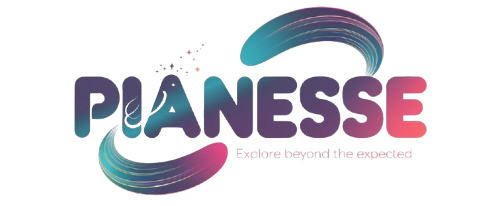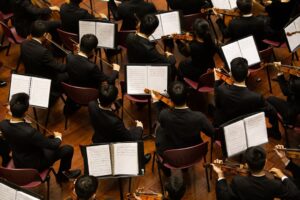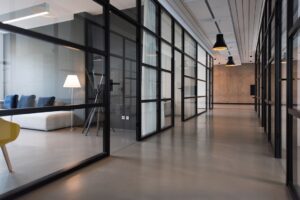Are Lebanon Citizens College Educated?

Lebanon’s education system is a complex tapestry woven from its rich historical, cultural, and socio-political threads. The country boasts a long-standing tradition of education that dates back to the 19th century, with the establishment of schools by missionaries and later by the state.
The Lebanese education system is often lauded for its emphasis on multilingualism, with students typically learning Arabic, French, and English, which equips them with valuable skills in an increasingly globalized world. Despite its strengths, Lebanon’s education system faces significant challenges. The civil war that ravaged the country from 1975 to 1990 left deep scars on the educational infrastructure, leading to disparities in access and quality.
In recent years, the influx of Syrian refugees has further strained the system, exacerbating existing inequalities and placing additional pressure on resources. As Lebanon grapples with economic instability and political turmoil, the education sector remains a critical area for reform and investment, as it holds the key to the country’s future development and social cohesion.
Key Takeaways
- Lebanon’s education system is characterized by a mix of public and private institutions, with a strong emphasis on higher education.
- Access to higher education in Lebanon is relatively high, with a large number of universities and colleges available to students.
- Enrollment rates in Lebanese universities have been steadily increasing, with a growing number of students pursuing higher education.
- The quality of education in Lebanon varies widely, with some institutions offering world-class education while others struggle with resource constraints.
- Challenges and barriers to college education in Lebanon include financial constraints, limited access to quality education, and political instability.
Access to Higher Education in Lebanon
Uneven Distribution of Educational Institutions
The country is home to a variety of universities, including well-established institutions such as the American University of Beirut (AUB) and the Lebanese University (LU), which cater to a diverse student population. However, the accessibility of these institutions is unevenly distributed across different regions and socio-economic groups.
Regional and Socio-Economic Disparities
While urban centers like Beirut offer a plethora of options for higher education, rural areas often lack sufficient facilities and resources, limiting opportunities for students from less affluent backgrounds. Moreover, financial barriers play a significant role in determining access to higher education. Tuition fees at private universities can be prohibitively expensive for many families, leading to a reliance on scholarships and financial aid programs.
Social Factors Influencing Educational Attainment
Although some public universities offer lower tuition rates, they are often overcrowded and underfunded, which can deter prospective students. The disparity in access is further compounded by social factors such as gender inequality and sectarian divisions, which can influence educational attainment and aspirations among different groups within Lebanese society.
Enrollment Rates in Lebanese Universities

Enrollment rates in Lebanese universities reflect both the demand for higher education and the challenges faced by prospective students. According to recent statistics, approximately 40% of high school graduates in Lebanon pursue higher education, a figure that underscores the value placed on academic achievement within the culture. However, this statistic also highlights the significant number of students who do not continue their education beyond secondary school, often due to financial constraints or a lack of available programs that align with their interests.
The enrollment landscape is further complicated by the proliferation of private universities, which have seen a surge in popularity over the past few decades. These institutions often attract students with promises of better facilities, international partnerships, and more diverse academic offerings. However, this trend has also led to concerns about the quality of education provided at some private institutions, as well as issues related to accreditation and recognition of degrees.
As a result, while enrollment rates may appear robust on the surface, they mask underlying disparities that affect students’ experiences and outcomes in higher education.
Quality of Education in Lebanon
| Metrics | Data |
|---|---|
| Literacy Rate | 93.9% |
| Primary School Enrollment | 96.2% |
| Secondary School Enrollment | 78.4% |
| Public School Spending per Student | 1,200 |
| Private School Spending per Student | 3,500 |
The quality of education in Lebanon is a multifaceted issue that encompasses various dimensions, including curriculum relevance, teaching methodologies, and institutional resources. Lebanese universities are known for their rigorous academic standards and competitive admission processes, particularly at prestigious institutions like AUMany universities have adopted modern teaching practices and curricula that emphasize critical thinking and problem-solving skills, preparing students for the demands of the global job market. However, significant challenges remain regarding the overall quality of education across the country.
Public universities often struggle with inadequate funding, leading to overcrowded classrooms and outdated facilities. This lack of resources can hinder the ability of faculty members to deliver high-quality instruction and support student learning effectively. Additionally, there is a growing concern about the alignment between academic programs and labor market needs, as many graduates find themselves ill-prepared for available job opportunities.
This disconnect raises questions about the effectiveness of educational policies and practices in equipping students with the skills necessary for success in an evolving economy.
Challenges and Barriers to College Education in Lebanon
Several challenges impede access to college education in Lebanon, creating barriers that disproportionately affect marginalized groups. One significant issue is the economic instability that has plagued the country in recent years. The devaluation of the Lebanese pound has made it increasingly difficult for families to afford tuition fees and related expenses, leading many students to abandon their educational aspirations altogether.
This economic crisis has also resulted in reduced government funding for public universities, further exacerbating inequalities in access to quality education. In addition to economic factors, social barriers also play a crucial role in shaping educational outcomes. Gender inequality remains a persistent issue in Lebanon, with cultural norms sometimes discouraging young women from pursuing higher education or specific fields of study deemed inappropriate for their gender.
Furthermore, sectarian divisions can influence educational opportunities, as students from certain backgrounds may face discrimination or limited access to resources. These challenges create a complex web of obstacles that hinder many students from realizing their potential through higher education.
Impact of College Education on Lebanon’s Economy

The Significance of a Well-Educated Workforce
A well-educated workforce is essential for driving innovation, productivity, and economic growth in Lebanon. Graduates from Lebanese universities often possess valuable skills that contribute to various sectors, including finance, technology, healthcare, and engineering.
The Economic Benefits of Higher Education
The presence of reputable institutions like AUB has also attracted international partnerships and investments, further enhancing Lebanon’s position as a regional hub for education and research. However, the economic benefits of higher education are not evenly distributed across society. While some graduates secure lucrative positions in multinational companies or start their own successful ventures, others struggle to find employment that matches their qualifications.
Addressing the Mismatch between Education and Labor Market Demands
The mismatch between educational outcomes and labor market demands poses a significant challenge for Lebanon’s economy. Addressing this issue requires a concerted effort from both educational institutions and policymakers to ensure that academic programs align with industry needs and equip students with relevant skills.
Government Initiatives to Improve College Education in Lebanon
In response to the challenges facing higher education in Lebanon, the government has implemented various initiatives aimed at improving access and quality. One notable effort is the establishment of scholarship programs designed to support underprivileged students pursuing higher education. These programs aim to alleviate financial burdens and promote inclusivity within the educational system.
Additionally, partnerships between public universities and private sector organizations have been encouraged to enhance research capabilities and foster innovation. Moreover, there have been calls for comprehensive reforms within the education sector to address systemic issues related to governance and funding. The Lebanese Ministry of Education has recognized the need for curriculum updates that reflect current labor market trends and technological advancements.
By fostering collaboration between educational institutions and industry stakeholders, the government aims to create a more responsive education system that meets the evolving needs of both students and employers.
Future Outlook for College Education in Lebanon
The future outlook for college education in Lebanon is shaped by both challenges and opportunities. As the country navigates its ongoing economic crisis and political instability, there is an urgent need for strategic investments in education that prioritize equity and quality. The potential for growth exists within Lebanon’s vibrant youth population, which possesses a strong desire for knowledge and advancement despite prevailing obstacles.
Furthermore, advancements in technology present new avenues for enhancing educational delivery and accessibility. Online learning platforms have gained traction during recent crises, offering flexible options for students who may face geographical or financial constraints. By embracing innovative teaching methods and expanding access to digital resources, Lebanon can work towards creating a more inclusive educational environment that empowers all students to succeed.
In conclusion, while Lebanon’s education system faces significant hurdles, it also holds immense potential for transformation. By addressing existing disparities and fostering collaboration between stakeholders across sectors, Lebanon can cultivate an educated workforce capable of driving economic growth and social progress in the years to come.
FAQs
What is the education level of Lebanon citizens?
Lebanon has a relatively high level of education, with a significant portion of its citizens having completed college or university education.
What is the literacy rate in Lebanon?
The literacy rate in Lebanon is estimated to be around 93.9%, indicating a high level of education and literacy among its citizens.
What are the popular fields of study in Lebanon?
Popular fields of study in Lebanon include business, engineering, medicine, and social sciences. Many students also pursue degrees in fields related to arts and humanities.
Are there significant disparities in access to education in Lebanon?
While Lebanon has a relatively high level of education overall, there are disparities in access to education, particularly between urban and rural areas, and among different socio-economic groups.
What are the educational opportunities for Lebanon citizens?
Lebanon has a number of universities and colleges offering a wide range of educational opportunities for its citizens. Additionally, many Lebanese students also pursue higher education abroad.







